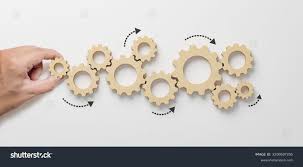When discussing business operations, you may come across the term “COG” or “COGS,” which stands for “Cost of Goods Sold.” Understanding this term is essential for business owners, entrepreneurs, and anyone involved in financial management. It plays a critical role in calculating profitability, setting pricing strategies, and ensuring that a business remains financially viable. In this article, we will dive deep into the concept of COG, its significance in business, how it’s calculated, and its impact on a company’s bottom line.
Understanding COG (Cost of Goods Sold)
In simple terms, the Cost of Goods Sold (COGS) represents the direct costs incurred by a business to produce the goods or services it sells. These costs are directly tied to the production process and vary depending on the type of business. For a manufacturing company, COGS includes the cost of raw materials, labor, and overhead expenses related to the production of goods. For service-based businesses, COGS may involve expenses related to delivering services, such as the cost of labor, equipment, and other resources used to complete a service.
It’s important to note that COGS only includes direct costs. Indirect costs, such as marketing expenses, office rent, utilities, and administrative costs, are not included in COGS and are instead classified as operating expenses.
Why is COG Important for Businesses?
COG plays a crucial role in understanding the financial health and profitability of a business. The significance of COG lies in its ability to help business owners and managers determine how efficiently their company is producing and selling products or services. Here are several reasons why COG is essential for business operations:
- Calculating Gross Profit: Gross profit is one of the most important financial metrics for any business. It is calculated by subtracting COGS from total revenue. This figure gives business owners insight into the profitability of their core operations, excluding operating expenses. A higher gross profit margin indicates that a company is efficiently producing goods at a reasonable cost, whereas a lower margin may signal inefficiencies in production or pricing strategies.Gross Profit=Revenue−COGS\text{Gross Profit} = \text{Revenue} – \text{COGS}Gross Profit=Revenue−COGS
- Pricing Strategy: COGS is a key factor when setting the price of a product or service. Businesses need to ensure that the price they charge for their goods or services covers the direct costs and provides room for profit. A deep understanding of COGS helps businesses price products competitively while ensuring profitability. If a company’s COGS is too high relative to the price charged, it may lead to low profit margins, which can negatively impact the sustainability of the business.
- Financial Analysis and Planning: By tracking COGS over time, businesses can identify trends and patterns that affect production costs. This helps with forecasting and budgeting. If COGS is increasing, it may indicate that the business is facing rising production costs, such as more expensive raw materials or labor. Conversely, decreasing COGS may indicate improved efficiency or cost-saving measures being implemented.
- Tax Implications: COGS is also essential for tax purposes. In most cases, businesses can deduct COGS from their taxable income, reducing their tax liability. This means that businesses with higher COGS can reduce their taxable income, leading to potential tax savings. However, proper documentation of COGS is necessary to ensure compliance with tax laws.
How is COGS Calculated?
Calculating COGS may seem complex, but it’s relatively straightforward once you break down the components. Here’s the general formula for calculating COGS:COGS=Beginning Inventory+Purchases During the Period−Ending Inventory\text{COGS} = \text{Beginning Inventory} + \text{Purchases During the Period} – \text{Ending Inventory}COGS=Beginning Inventory+Purchases During the Period−Ending Inventory
Let’s go over each element of the formula:
- Beginning Inventory: This refers to the value of the inventory on hand at the start of the accounting period. It could be finished goods, raw materials, or work-in-progress items that are available for sale.
- Purchases During the Period: This includes all the costs associated with acquiring additional inventory or materials needed to produce goods during the period. It may also include direct labor costs if they are tied to production.
- Ending Inventory: This represents the value of inventory left unsold or unused at the end of the accounting period. This figure is subtracted from the sum of the beginning inventory and purchases to account for goods that were not sold during the period.
For example, imagine a company starts the year with $20,000 in inventory. During the year, the company purchases additional inventory worth $50,000. At the end of the year, the company has $10,000 in unsold inventory. The calculation for COGS would be:COGS=20,000+50,000−10,000=60,000\text{COGS} = 20,000 + 50,000 – 10,000 = 60,000COGS=20,000+50,000−10,000=60,000
Thus, the company’s cost of goods sold for the year is $60,000.
What Costs Are Included in COGS?
COGS includes any direct costs associated with the production of goods or services. The specific costs can vary depending on the type of business, but here are some common expenses included in COGS:
- Direct Materials: This includes raw materials and components that are used in the production of goods. For example, in a furniture manufacturing business, the wood, fabric, nails, and screws would be included in COGS.
- Direct Labor: The wages and benefits paid to employees directly involved in production. For instance, assembly line workers or technicians who are involved in making or assembling the products would be included in COGS.
- Manufacturing Overhead: This category includes indirect production costs that are necessary for production but cannot be traced directly to specific products. Examples include factory rent, utilities, and equipment depreciation.
- Service-Based Costs: For service businesses, COGS includes expenses related to delivering services. For example, in a consulting firm, labor costs, project-related travel expenses, and any specialized tools or software used to deliver services would be considered part of COGS.
What Costs Are Not Included in COGS?
It’s important to note that not all expenses are included in COGS. Indirect or non-production-related costs are excluded. These include:
- Marketing and Advertising Costs: Expenses related to promoting the business or attracting customers.
- Administrative Expenses: Salaries of employees not directly involved in production, office rent, and office supplies.
- Depreciation on Office Equipment: Depreciation on assets not directly related to production.
These costs are considered operating expenses and are subtracted from gross profit to determine operating income.
Impact of COG on Business Profitability
COGS directly affects a company’s profitability. A high COGS relative to revenue can result in lower profit margins, which can make it harder for a business to stay competitive or financially stable. On the other hand, businesses that can effectively manage and reduce COGS without sacrificing quality often see improved profit margins and financial performance.
Effective inventory management, optimizing production processes, and negotiating better deals with suppliers are just a few ways a business can lower its COGS. Implementing cost-saving strategies while maintaining product quality is key to ensuring that the company remains profitable in the long run.
Conclusion
In the context of business, COG (Cost of Goods Sold) is a vital financial metric that directly impacts your profitability, pricing strategy, and overall financial health. It’s essential for business owners to understand how to calculate and manage COGS to maximize gross profit and maintain a competitive edge in the market. By keeping track of COGS and implementing effective strategies to control it, businesses can enhance their financial performance, make informed decisions, and set themselves up for long-term success.
If you’re a business owner or manager, it’s crucial to regularly analyze your COGS, identify areas for improvement, and take proactive steps to reduce unnecessary costs. Whether you operate in retail, manufacturing, or services, understanding COGS can make a significant difference in your business’s bottom line.



